
Would you like to start a conversation with other industry leaders to brainstorm a challenge or to just know more on a particular topic?
Engage in online discussions with your Peers
Start NowTata AutoComp Systems, promoted by the Tata Group, provides products and services to the Indian and Global automotive OEMs as well as Tier 1 suppliers. The line of products and services includeautomotive interior andexterior plastics, composites, sheet metal stampings as well as engineering and supply-chain. The company has 9 joint ventures in partnership with leading companies from the global auto component industry through which it manufactures and markets automotive components and systems, like engine cooling solutions, automotive batteries, rear view mirrors, command systems, HVAC, exhaust and emission control systems, seating systems, etc. and electronic solutions for passenger and commercial vehicles. There are 37 manufacturing facilities spread across India and 9 facilities spread across North America, Latin America, Europe and China.
AutoComp’s Industry Outlook
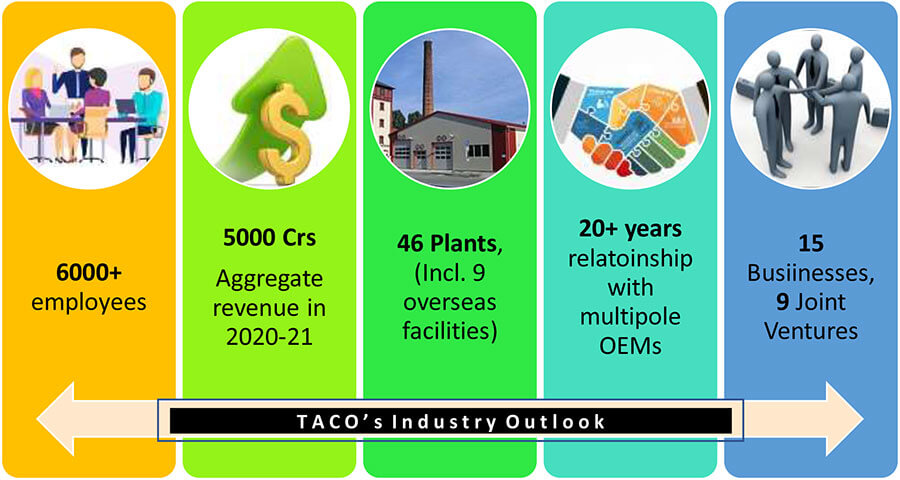
With its extensive finance operations for both India and overseas businesses, the logical step was to createa Finance shared servicescentre in the capacity of a global support function for multiple business units. Its aim was to economize operations by engagement of quality resources and monitoring cost drivers.The management team, along with the CEO and CFO developed a strategic vision of transforming 13 decentralized domestic business units and 2 off-shore businessunits having individual finance functions by consolidating all under one umbrella to form a shared services center.
The goals for setting up the Finance Shared Services Centre included:
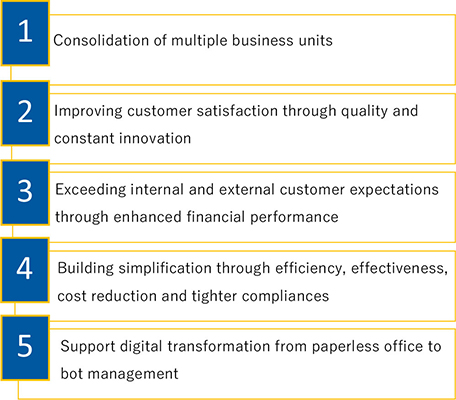
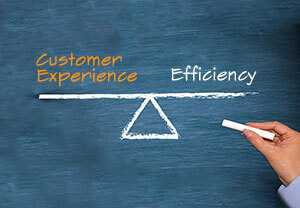
The 5-Phased Journey
Setting up of the FSSC has been a great learning experience for each and every member involved in the process. It has been a transformational journey with an aim to create the best-in-class. Our journey is best describedas a5-phase process, as below:
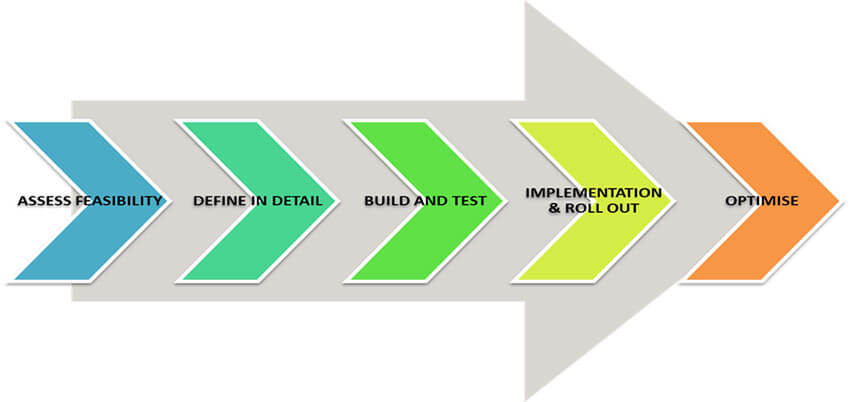
Phase 1
We started with Assess Feasibility and our prime focus was to develop a clear vision, define how processes could be split between local business and the shared service centre, define the technology to be used, assess possible locations and agree to the most appropriate solution. By the end of this phase, we could set out financial and non-financial benefits so that we could make robust “go/ no-go” decisions.
Phase 2
Our second phase was to Define in Detail, the complete picture of what our future processes would be like, and who would do what, and how. Upgrading technology was our key process enabler and we were sure that this shift would have a huge impact on our employees. Therefore, we ensured involvement of all stakeholders.This helped us to plan and prepare for any resistance to change. Service level agreements and performance measurement mechanisms were drafted to ensure clarity between Tata AutoComp and its clients.
Phase 3
The third phase was the Build and Test where everything was brought together. It required a close integration of process designs, technology tools that supported them and the users who would operate them on day-to-day basis. In this phase we also created most of the policy & procedure documents, user guides, training materials and detailed job-descriptions. We also started hiring staff for new roles and simultaneously training our existing employees in the new processes and system software. This was one of the most sensitive and time taking phases.
Phase 4
The fourth stage was Implementation and Roll Out. By now a great deal of work was done by creating “on paper processes”, that were efficient in a test environment. Going live was however the acid test.This stage was actually to confirmwhether our solutions actually worked and that the business was in a ready state of transition and migrations.
Phase 5
By now we were already in out last phase, the shared service centre of Tata AutoComp Systems was almost established but this was not the end of the journey. Although we had achieved a great deal at this point of time but there were always new opportunities to Optimise working practices.
Our focus now had shifted to building strong business partner relationship with our counterparts and move from strength to strength.With every passing day, this is now a process of continuous improvement.
We periodically access and reassess out working style and make changes to suit the demands of the stakeholders.
We chose the phase wise approach to stagger the migrations over a period of time and the ensuing knowledge transfer from the old processes to the new/ updated ones.
Kick-start Hurdles
We faced a lot of challenges to put things in the right flow, as expected. For this we drove multiple brains storming sessions within the team and made minor customized changes for swift functioning of the processes. At the end of it we realized that clear planning and adequate resources helped us to achieve the desired outcomes. Some of the daunting initial challenges were:
We conducted an internal survey amongst employees to determine the root causes of some of the issues and to establish employee satisfaction.As a result of our survey, we took a few strategic steps such as:
- Defining task and responsibility checklist between Shared Service and Business Units,
- Assignment of clear job roles and responsibilities for each resource.
- Cross-functional training for employee resilience.
- Cross-functional training for employee resilience.
- Cross-functional training for employee resilience.
- Cross-functional training for employee resilience.
Technology Implementation
Dealing with multiple accounting platform was a greater challenge than we could anticipate. While taking over from the various business units we found out that they had been using various legacy accounting systems for decades. Some of the software were DOS based, making it difficult to keep up with the next-gen solutions to reduce manual efforts and increase productivity of the organisation.
One of the major hurdles was the non-acceptance of the new systems from the employees, since they were comfortable with the legacy systems owing to their long tenures– some of them being more than 40 years in age.
Our team created a universally acceptable solution by implementation of an ERP system – to bring uniformity and to keep up with the need to bring in the latest technological solutions in a global, cross functional requirement. The ERP system manages all aspects of a business- aligning financial management, human resources, supply chain management, and manufacturing with the core function of accounting.
Bots were introduced into the shared services initially in the simple processes but quickly expanded to more complex processes like stock transfer/customer receipt application etc.It proved to be asuccessfulmove by saving in FTE’s and improving productivity. It also helped in structuring the processes and streamlining the tasks. From the shared service perspective, it resulted in huge volume efficiency, due to wide coverage.As a part of the continuing journey, we aspire to further improve our technology footprint rapidly. We will soon create several unattended bot scenarios, install configurable text editors,implement ML and OCR technologies along with our in-house ERP enhancements.
The Process of Value Creation
Gradually over a period of time we have come to realize that the shared service center can do a lot more than merely save costs by building efficiencies. The center can be a direct contributor to the organization’s goals by implementing a vision of creating value for the business. Value creation for business can elevate the center from being a stringent followerof processes to being an innovator and partner in organization building. A roadmap could well be as below:
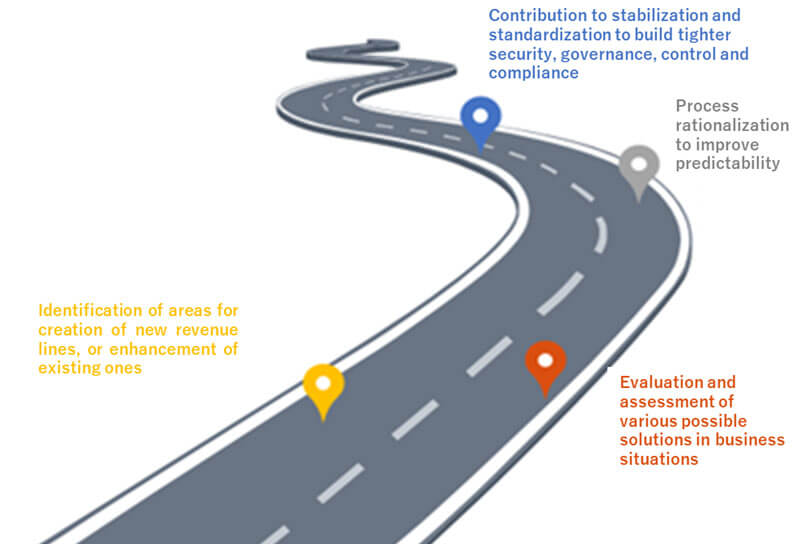
We believe that by taking these steps by automation and other measures, Tata AutoComp will be able to createtremendous business value.
An example of some of the benefits delivered so far:
Selling Price Updation
86% in time saving with 70-man hours per month
Customer Receipt Tagging
86% in time saving with 17-man days per month
Creditor Ageing & Payment allocation
97% in time saving with 70-man hours per month
Bank Reconciliation
70% in time saving with 40-man hours per month
STO- Stock Transfer between plants
90% in time saving with 54-man hours per month
Efficiency Reports
Utilization of log reports
It’s the People Factor
Evolution & Way Forward
We had set-up our domestic units in August of 2018, added business units swiftly and completed migration of all units by Jan 2019. Tata AutoComp has now acquired business units in Sweden, Poland, USA and China. Resources from different age groups, educational qualifications, cultural backgrounds, and skill sets were pooled under one roof. With best minds in place, business processes were aligned, delivering innovative, transformational and optimized solutions to customers emphasizing on next-gen practices.
ABOUT THE AUTHOR

Sanchala heads the Finance Shared Services covering both Indian and Offshore business units of Tata Autocomp Systems. Having experience of over 20 years in varied industries like pharmaceuticals, education institution, automotive manufacturing, she has worked in core accounting with a couple of SAP implementation business processes. She has an extensive experience in setting up shared services network of both domestic and offshore locations with varied languages (Swedish/ Polish/ Chinese) and accounting platforms.
Her passion for automated processes enabled an introduction to unique processes like FOAK (First of its kind) implementation in salary payment process and bots in shared services.




